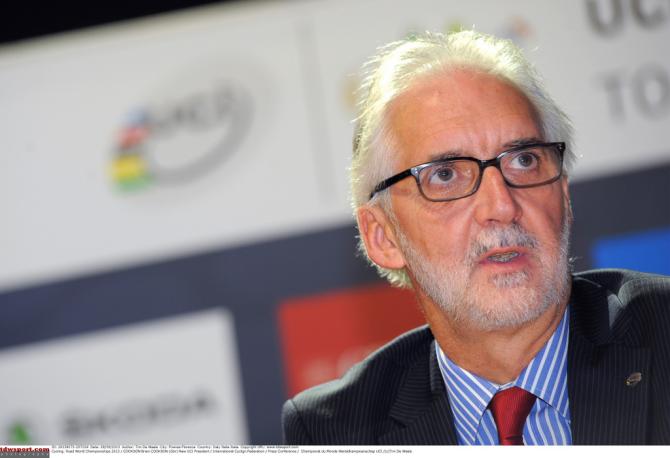UCI announces 2017 Teams' Operational Guide
Trek, Orica-GreenEdge, Cannondale-Garmin amongst test teams

The UCI this week announced the criteria for the organisation of WorldTour teams which are due to become official in 2017. The Teams' Operational Guide will be tested voluntarily by eight teams in 2015 as well as Astana, who were required to adopt the guidelines after a re-examination of its licence after a string of doping positives.
The UCI's criteria for a WorldTour licence already covered sporting, ethical, financial and administrative areas, but in 2017 they must also meet the new organisational requirements, which will be put into place to "combat factors which may lead to doping", the UCI said in a statement.
"Accompanying the riders within the teams, all year long, is a key factor in reducing the risk of doping," the UCI stated. "To this end, the professionalization of the teams’ governance and organisation is of fundamental importance. Several teams are making considerable efforts in this regard; many of them have taken steps to reform their structures in order to provide a more professional environment which is better adapted to the well-being of their riders."
As part of the effort, the UCI commissioned the Institute of Sports Science at the University of Lausanne (ISSUL) to come up with the new guide in consultation with the teams. Eight WorldTour and two Pro Continental teams were studied between 2012 and 2014, and then after consultations and workshops, eight WorldTour teams volunteered to take part in testing the rules: AG2R La Mondiale, FDJ.fr, Team Cannondale-Garmin, IAM Cycling, Etixx-Quick Step, Orica GreenEdge, Team Giant-Alpecin and Trek Factory Racing.
The guide was finalised at a UCI meeting of stakeholders in early December.
The new Teams’ Operational Guide includes ten rules covering the following areas:
- The preparation of riders (planning of the training, competition and recovery phases)
- Their support (the need to have a sufficient number of staff within the team, with respect to the number of riders)
- The medical treatment given to them (notably, the required inclusion of a doctor within the team)
- The workload imposed on them
- The number of riders within the team (to allow the recommended rider-support staff ratio to be respected within sustainable financial limits)
- The monitoring of riders (via an online platform)
- The certifying of the team’s staff (with a view to professionalization)
The latest race content, interviews, features, reviews and expert buying guides, direct to your inbox!
The majority of the rules will be tested in 2015 and 2016 before becoming compulsory from 2017
"The UCI and the cycling family are delighted with this step forward, which was approved at the end of the 2014 UCI WorldTour Seminar, held on December 4-5 of this year. Qualitatively harmonising the methods of governance and organisation of the first- and second-tier teams sends out a strong signal to cycling fans, broadcasters and commercial partners wishing to invest in cycling," the UCI stated.
The UCI faced opposition from teams and race organisers over the proposed reforms. Teams objected to reducing the number of riders in their rosters, while race organisers railed against the proposed reduction in the number of race days.
The UCI still has yet to fully announce what the calendar will include, choosing only to release the requirements to which teams will be subjected. The Pro Cycling Council agreed earlier this year to testing the operational rules before they are implemented.
